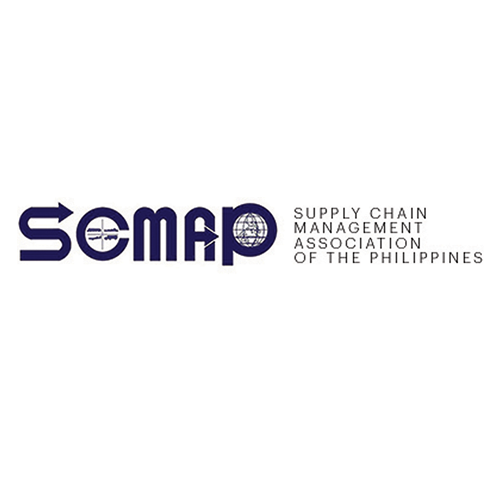Two weeks from today the Philippines returns to the voting booth, choosing the country’s next leaders and, consequently, choosing its direction for the next six years, and perhaps beyond.
Considering the events of the past few years, the decision is pretty critical. Despite most restrictions being lifted, the COVID-19 pandemic continues to rage. The possibility of another spike in cases continues to lurk, especially as we head to the polls. At the very least, case surges elsewhere in the world will affect our mobility, restrict available opportunities and potentially paralyze our supply chains, especially with Shanghai under strict lockdowns.
Our economic recovery remains uncertain because of the pandemic, as well as other geopolitical disruptions. Russia’s war against Ukraine rages on, further limiting the movement of certain commodities and goods. The cost of crude oil remains high as Russia, a major oil producer, bears the brunt of economic sanctions – and it is affecting all energy markets, which means higher costs on pretty much every segment of our supply chains.
Developed countries have already reported record inflation rates, weakening the power of their citizens’ purses and leading to some tough choices. Our inflation rate for March 2022 is at 4.0%. It’s still within government targets, but the Bangko Sentral has already said it expects the rate to breach those targets by the end of the year. Most Filipinos will have to make those tough choices as prices of “essential” goods (remember that term?) surge further, alongside power costs.
Personally, the biggest issue the country faces in the coming years is a cost-of-living crisis. We’ve long known that prices will go up as a result of the pandemic and the virtual shutdown of economies across the world. We’ve talked about the “supply chain crisis” brought about by restrictions in movement, shortages in capacity and increased demand for products as we stayed home. Efforts have been underway to address these issues, but considering the circumstances stakeholders – across all industries – can only really hold on for so long. Costs will have to be passed to the consumer, and if they make those tough decisions and move away from certain goods, businesses will become less competitive – and it’s not good news for an economy looking to find its place in whatever normal the next few years holds.
A cost-of-living crisis sounds daunting, but understanding how interconnected different players in the economy – understanding how supply chain works, essentially – helps clear the picture and, perhaps, offer some solutions. For instance, we know that over a quarter of a company’s sales costs goes to logistics. How do we drive it down? For one, you ensure the movement of these goods go faster. How do you reduce congestion? Perhaps more infrastructure, particularly public transport? More sensible regulations, and not just ones made to look like something is being done, like the MMDA loudly hoping for the demise of the “coding car”?
You can also look at existing laws and regulations and see if they are still fit for purpose. We have seen in recent years that high logistics costs can be attributed to regulatory bottlenecks in some cases, or outdated frameworks in others. How do we address these? How do we make sure responsible agencies are fit for purpose? How can we ensure that all stakeholders have a say in matters that impact their competitiveness?
There is also a need to further support the logistics sector by addressing long-standing issues with capacity and capability. The early days of the lockdown have seen delivery riders and other logistics personnel hailed as heroes for keeping the economy moving, but how do we build on this goodwill? Recently passed legislation, such as the amended Public Service Act, opens the window for further investment in the logistics sector, allowing for new technologies and innovations to come in. But how do we protect the welfare of our logistics frontliners? How do we further encourage investment in the industry? Addressing this could pave the way for a stronger agricultural sector, more equitable growth and fewer incidences of food insecurity, particularly during disasters.
Let’s widen our lenses further. How do we ensure our economy can be truly resilient amidst disasters and other disruptions? How do we address urgent concerns over global heating and reconfigure our economy to be more sustainable? How do we spread the rewards of our recovery to every part of the Philippines? Perhaps more urgently, how do we deal with a possible next spike in COVID-19 cases without having to shut the economy down again?
In the past few years we at SCMAP are happy to have been part of intensified efforts by the government to address concerns of the supply chain sector. Between a stronger commitment to infrastructure investment and more meaningful collaboration between government agencies and private sector stakeholders, a lot has been accomplished. We hope these gains are built upon regardless of whoever is chosen to lead the country.
That said, considering everything that’s unfolding as I write this, our next leaders will have quite a challenge on their hands. It will take a knack for project and crisis management; a sense of effective communication, especially since the change we want won’t come in an instant; and perhaps most importantly, the ability to inspire everyone to step up to the challenge and work for the sake of the country. Everything is in flux, and we need all the help we can get if we are to get past these challenges in a better state than when we entered it. It’s not impossible, but it takes a lot of work – and that first step may as well be the one we take two weeks from today.
Henrik Batallones is the marketing and communications director of SCMAP, and editor-in-chief of its official publication, Supply Chain Philippines. More information about SCMAP is available at scmap.org.





